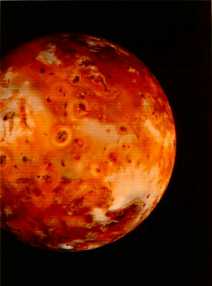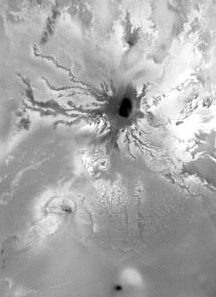This is an image of Io.
Click on image for full size
NASA
Io
Io was first discovered by Galileo in 1610, making it one of the
Galilean Satellites. Of the 60 moons it is the 5th closest to Jupiter. Io is the 4th largest moon of Jupiter, with a diameter about 2/3 the distance across the United States.
Io is named after one of Jupiter's many girlfriends, from Roman mythology. It is the only moon known to have active volcanos on the surface.
Because of all the lava, the environment of Io is pretty unfriendly to life as we know it on earth.
You might also be interested in:

How did life evolve on Earth? The answer to this question can help us understand our past and prepare for our future. Although evolution provides credible and reliable answers, polls show that many people turn away from science, seeking other explanations with which they are more comfortable.
...more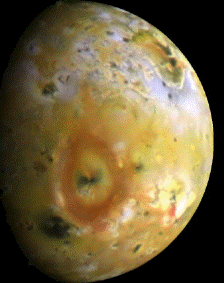
Unlike the other moons of Jupiter, Io is not made of ice. In fact, the surface of Io is rocky with many volcanoes. The volcanoes pour out lava of sulfur from the inside of Io. The surface of Io can be
...more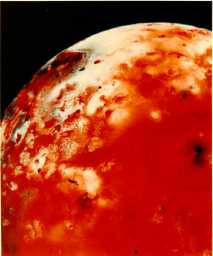
The moon Io is one of the only ones that has an atmosphere. But the environment of Io stills seems pretty unfriendly toward life as we know it on earth. Io is very small, so there is not much gravity.
...more
In the foreground of this image is shown the geyser, Pelee.
...more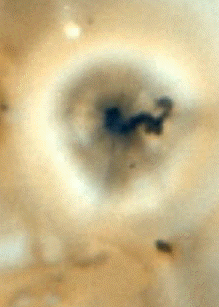
This is an image of the geyser, Prometheus. The black marking in the center of the image is the mouth of the geyser. This opening is encircled by a pool of material.
...more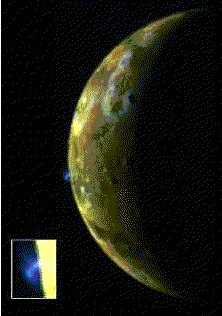
When Voyager flew by Io the surprise discovery was the geyser, Prometheus, in full eruption. Geysers such as Prometheus spout pools of liquid around the vent, rather than a channel of lava. Well known
...more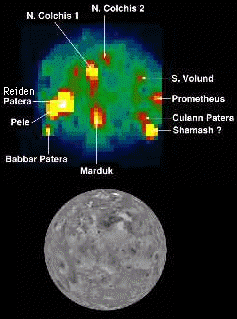
Hotspots help scientists know where the volcanoes & geysers of Io are actually located. This picture shows a map of the hotspots of Io at the top, and the same image of Io taken with a camera, at the bottom.
...more


